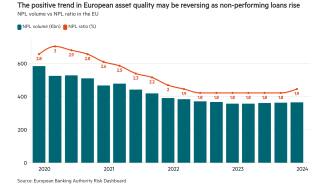It is all change at the top of France’s overall best-performing table, with BNP Paribas, the country’s second-largest bank by Tier 1 capital, wresting the crown from Société Générale (SocGen).
While SocGen has fallen to fourth spot in this year’s overall best-performing table, BNP Paribas has moved up three spots to first, outperforming its four largest peers in growth, profitability, asset quality, and return on risk.
Most French banks saw their pre-tax profitability decline year-on-year, with BNP Paribas recording the lowest dip of just 0.80% in 2022. Meanwhile, SocGen posted the biggest fall in pre-tax profits (PTP), of 47.5%.
BNP Paribas also posted the best return on capital ratio, of 10.24%, among the six domestically owned banks included in the Top 1000 World Banks ranking.
Despite falling to fourth spot overall in this year’s performance table, SocGen ranked first for operational efficiency and liquidity.
Crédit Mutuel and Crédit Agricole Group, the latter being France’s largest lender by Tier 1 capital, have maintained second and third position, respectively, in this year’s overall best-performing table. Crédit Mutuel has topped the table in soundness and leverage, while Crédit Agricole’s best result is in return on risk.
Group BPCE, which is the third-largest French bank by Tier 1 capital, has remained in last place among its peers in performance, despite solid results in soundness and leverage. Its PTP fell by almost 14% in 2022.
While rising interest rates have benefitted most banks’ bottom line in the form of higher net interest income, contributing to higher levels of net interest income for most European banks, French banks have not benefitted as much due to characteristics unique to the French market.
Unlike the UK where mortgages are either fixed, variable or track the Bank of England base rate, in France most mortgages are fixed. Furthermore, the government sets interest rates on the Livret A savings scheme, which is designed to bolster the government’s coffers. Recently, the government decided to increase the interest rate on the scheme by 100 basis points to 3%, which will impact French banks’ profitability in 2023.
These characteristics of the French market explain French banks’ ‘subdued’ domestic retail banking revenues.
Announcing its fourth quarter and full-year results for 2022, SocGen said 2023 will be “a transition year, with the negative impacts related to the end of the TLTRO [targeted longer-term refinancing operations] benefit and to the specific functioning of the French retail banking market”.










